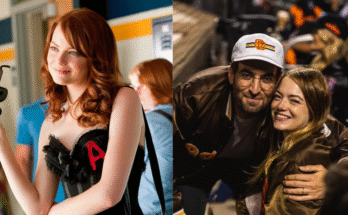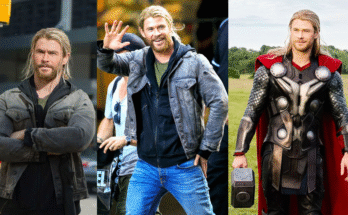The Man Behind the Mask: From Chaos to Iron Man
Robert John Downey Jr. (born April 4, 1965) is an American actor. Known for his charismatic performances and versatility, he was the highest-paid actor in Hollywood annually from 2013 to 2015. But this simple biographical fact conceals one of cinema’s greatest comeback stories—a narrative of destruction, redemption, and ultimate triumph that rivals any script Hollywood could create.
His films as a leading actor have grossed over $14.3 billion worldwide, making him one of the highest-grossing film stars of all time. Yet more importantly, Robert Downey Jr. represents something profound about human resilience, second chances, and the possibility of transformation. He is not just an actor—he is a testament to the power of redemption.
The Artistic Foundation: Born Into Performance
Robert Downey, Jr. (born April 4, 1965, New York, New York, U.S.) is one of Hollywood’s most gifted and versatile actors. Downey was raised in an artistic household in New York City’s Greenwich Village; his father was a noted underground filmmaker who gave the five-year-old Downey his first part.
This wasn’t merely a father introducing his son to acting—it was a legacy passed down through generations of artists. Robert Downey Jr. was born on April 4, 1965, in Manhattan, New York, to Robert Downey, Sr. and Elsie. His father is a well-known film maker, actor, writer, director and his mother was an actress. From a very young age, Downey was involved in acting.
At the age of five, Downey made his acting debut in his father Robert Downey Sr.’s film Pound (1970). While most children were learning to read, young Robert was learning to perform. His childhood wasn’t ordinary—it was bohemian, artistic, and deeply theatrical. Greenwich Village in the 1960s and early 1970s was a hotbed of artistic experimentation, and the Downey household embodied that spirit.
By age ten, he was studying classical ballet in London. He pursued acting with precocious seriousness. But childhood stardom often carries hidden dangers. The young actor was given opportunities most people never receive, yet those same opportunities placed him in an adult world before he was psychologically prepared.
The Brat Pack Years: Early Success and Excess
He rose to prominence by working with the Brat Pack for the teen films Weird Science (1985) and Less than Zero (1987). In the mid-1980s, a group of young actors emerged—the so-called “Brat Pack”—and Robert Downey Jr. was among them. These were talented, charismatic performers who embodied the excess and cynicism of the Reagan era.
In Weird Science, Downey displayed charm and comedic timing. In Less than Zero, he played a drug-addicted young man sliding into dissolution. The performance was chilling because it contained an element of documentary authenticity—Downey understood the character at a level that went beyond acting.

He appeared on Saturday Night Live in 1985-86, demonstrating his ability to perform sketch comedy with the same naturalism he brought to dramatic roles. He was, by all accounts, extraordinarily talented. But talent alone is never sufficient. Without guidance, without grounding, without the psychological tools to manage success, talent can become a burden rather than a blessing.
Chaplin: The Performance of a Lifetime
His portrayal of Charlie Chaplin in the biopic Chaplin (1992) earned him the BAFTA Award for Best Actor and an Academy Award nomination. This was the performance that elevated Downey from promising young actor to artist. A particular high point in Downey’s career came in 1993 when he was nominated for an Academy Award (Best Actor) for his performance in Chaplin (1992), directed by Richard Attenborough. In the highly acclaimed film, which didn’t go over nearly as well with audiences as with critics, Downey nimbly portrayed the legendary Charlie Chaplin from ages 19 to 83. The role displayed his dramatic range and his considerable talent for physical comedy.
The performance required extraordinary preparation. Downey learned violin. He studied Chaplin’s physical mannerisms, his psychology, his creative vision. He didn’t just play Chaplin—he inhabited him. At age 27, Downey demonstrated that he was not merely talented but capable of genuine artistic achievement.
Yet here was the tragedy: just as Downey was reaching his artistic peak, his personal life was beginning its catastrophic decline. By this time, the 27-year-old Downey had come to be seen as one of the most gifted actors of his generation, but he had also earned a reputation as a troubled and controversial figure in Hollywood.
The Descent: The Dark Years
What followed was a descent that would have destroyed most careers permanently. The actor’s drug-related problems escalated from 1996 to 2001, leading to arrests, rehab visits and incarcerations, and he was eventually fired from Ally McBeal (1997).
The 1990s were a blur of artistic promise and personal chaos. He appeared in decent films—Richard III (1995), Natural Born Killers (1994)—but his personal demons increasingly dominated his life. Arrests. Rehab. Prison time. The trajectory was devastatingly familiar: a talented young actor destroyed by addiction, unable to control the very talent that had promised him everything.
By 2000-2001, Robert Downey Jr. had reached rock bottom. He was unemployable. No studio wanted to insure him. No director wanted to work with him. He was, in the industry’s cold calculation, a liability. In 2000, after being granted an early release, Downey was cast in a recurring role on the television series Ally McBeal, and he won a Golden Globe Award for his work on the show. His drug problems continued, however, and he was arrested several times.
Even as he won a Golden Globe for Ally McBeal, even as the television world briefly embraced him, his addiction spiraled further. He was fired from the show. He was jailed. He seemed destined to become one of cinema’s tragic cautionary tales—a brilliant performer consumed by his demons.
The Resurrection: Sobriety and Second Chances
In 2003 Downey seemed to turn his life and career around, and he thrust himself into his work, appearing in 13 feature films over the next five years, including The Singing Detective (2003), Good Night, and Good Luck. (2005), A Scanner Darkly (2006), and Zodiac (2007).

The transformation didn’t happen overnight. It required a fundamental reorientation of his life. More crucially, it required genuine sobriety. He stayed in a court-ordered drug treatment program and has maintained his sobriety since 2003. This wasn’t celebrity rehabilitation theater—this was a genuine commitment to living a different life.
How did he do it? In 2003, Downey began practicing Wing Chun, a Chinese martial art focused on discipline, mindfulness, and mental clarity. He committed to a spiritual practice. He surrounded himself with people who supported his sobriety. He made a deliberate choice, every single day, to remain clean.
During these years of rebuilding, Downey appeared in intelligent, character-driven films. A Scanner Darkly (2006) paired him with Keanu Reeves and Winona Ryder in a rotoscoped adaptation of a Philip K. Dick novel about drug addiction and surveillance. The film was deeply personal for Downey—playing a character sliding into paranoid delusion while he himself maintained hard-won sobriety required extraordinary emotional courage.
In David Fincher’s Zodiac (2007), Downey played a detective obsessed with catching a serial killer. The performance was controlled, intricate, and revealed an actor who had learned how to modulate his considerable charisma for the sake of character. He was no longer the explosive, uncontrolled performer of his younger days. He was an artist who had learned discipline.
Tony Stark: The Role That Changed Everything
Then came 2008. Iron Man was released on May 2, 2008, in the US. It became the eighth-highest-grossing film of 2008, earning more than $585 million worldwide against a production budget of $130 million. In Iron Man, Downey portrayed Tony Stark, a wealthy industrialist who is kidnapped and forced to build a deadly missile, only to instead construct a suit of armor that transforms him into the superhero Iron Man. Both the film and Downey’s performance were acclaimed by critics, many of whom considered his portrayal the standout element of Iron Man and credited it with catapulting him to global stardom.
The casting of Robert Downey Jr. as Tony Stark was, by conventional Hollywood logic, insane. Here was a man with a criminal record. A man who had been fired from television. A man whose insurance companies wouldn’t touch him. Marvel Studios took an enormous risk in casting him.
But director Jon Favreau understood something profound: Downey’s personal history—his past chaos, his redemption, his hard-won sobriety—gave him the psychological depth to inhabit Tony Stark authentically. Tony Stark is a man of charisma and intelligence, yes, but also a man learning to live with consequences, to take responsibility, to move beyond his own ego toward something larger than himself.
Downey brought all of this to the role. His Tony Stark wasn’t just a brilliant billionaire with quips—he was a man being redeemed through technology and relationships, learning to be a hero not through supernatural power but through moral transformation.
The performance was extraordinary precisely because it was authentic. Audiences sensed the reality beneath the character. They recognized in Tony Stark’s journey a parallel to Downey’s own redemption. The actor’s personal history gave the role dimensions that no actor without that history could have provided.
The Marvel Era: From Tony Stark to Cultural Icon
Downey gained global recognition for starring as Iron Man in ten Marvel Cinematic Universe films, from Iron Man (2008) to Avengers: Endgame (2019). Over eleven years, Robert Downey Jr. shaped the entire Marvel Cinematic Universe. He appeared in more MCU films than any other actor. His Tony Stark was the moral center around which the entire franchise orbited.

The films grossed billions of dollars. Downey became one of the most bankable stars on the planet. For three consecutive years, from 2012 to 2015, Downey has topped the Forbes list of Hollywood’s highest-paid actors, making an estimated $80 million in earnings between June 2014 and June 2015.
But beyond the financial success was something more significant: Downey had become a global cultural figure. He was recognized everywhere. Children around the world knew him as Iron Man. He was named by Time Magazine among the 100 most influential people in the world in 2008.
Yet what made this success different from his earlier fame was that it was grounded in genuine artistry and personal integrity. The Tony Stark of the MCU evolved from a selfish billionaire to a man willing to sacrifice everything for others. By the end of Avengers: Endgame, Tony Stark sacrifices his life to save the universe. It was a fitting conclusion for a character defined by moral growth.
Sherlock Holmes: Another Iconic Reinvention
Parallel to his Marvel work, Downey demonstrated his range by revitalizing the Sherlock Holmes character. Downey then assumed the title role in Sherlock Holmes (2009), a film featuring a visceral reimagining of the central character from Sir Arthur Conan Doyle’s detective series, and won a Golden Globe Award for his performance; a sequel followed in 2011.
His Sherlock was not the austere, intellectual detective of tradition. Instead, Downey created a Sherlock who was physical, charismatic, even comedic—while remaining fundamentally brilliant. It was a character that allowed Downey to display his considerable range: intellectual precision combined with physical comedy and emotional vulnerability.
Tropic Thunder: Fearless Risk-Taking
In 2008, the same year as Iron Man, Downey appeared in an entirely different kind of film. That same year he appeared in the satiric comedy Tropic Thunder as a self-important movie star who dons blackface to land the role of an African American soldier in the Vietnam War. For the latter role Downey received an Academy Award nomination for best supporting actor.
The role was deliberately provocative and controversial. Downey was playing a caricature of a method actor so committed to authenticity that he undergoes a procedure to darken his skin. The performance was satirical commentary on Hollywood’s obsession with authenticity and the ridiculous lengths actors will go for roles.
That Downey could take such a risk—appearing in blackface, even in a satirical context—speaks to how completely he had rehabilitated his image and career. He had enough credibility and cultural standing that audiences understood the satire. He earned an Academy Award nomination for a role that would have destroyed a lesser actor’s career.
The Oppenheimer Victory: Oscar Glory
For years, Downey had been nominated for Academy Awards but never won. Then came 2023’s Oppenheimer, directed by Christopher Nolan. In 2024 Downey won the Academy Award for best supporting actor for his performance in Oppenheimer (2023).

As Lewis Strauss, the chairman of the Atomic Energy Commission, Downey delivered a performance of quiet menace and bureaucratic evil. Strauss was not a villain of explosions and drama—he was a bureaucrat enacting revenge through administrative power. The performance required Downey to convey entire emotional landscapes through subtle gestures and carefully modulated dialogue.
The Oscar win felt like recognition not just of this single performance, but of an entire career—of a man who had fallen further than almost anyone in cinema history and had rebuilt himself into one of the greatest actors of his generation. When Downey won, it was applauded not just for the performance but for the journey that preceded it.
Personal Life and Redemption
In contrast to his prior history with the law, Downey has a much more stable home life these days. He met producer Susan Levin on the set of Gothika in 2003, and the two were engaged in November of that year. They married in August 2005 and have two children: son Exton, born in February 2012, and daughter Avri, born in November 2014. In June 2010, Downey and Levin began their Team Downey production company, producing films and TV shows such as The Judge (2014), Dolittle (2020), and the Netflix fantasy series Sweet Tooth.
His marriage to Susan Levin was transformative. She was a producer who understood the entertainment industry and supported his sobriety. Together, they built a production company, created films, and established a family. For a man who had spent years in a chaos of addiction, the stability of family life was perhaps the greatest achievement of all.
Philosophy and Wisdom
Quote: “I know very little about acting. I’m just an incredibly gifted faker.” This self-deprecating wit masks a deeper understanding. Downey understands that acting is about authenticity—finding truth within fiction. It’s about genuine emotion expressed through a character’s perspective.
Another of his quotes reveals the philosophy that sustains him: Quote: “You don’t need to worry about your car breaking down when you’re already on the side of the street with the hood up. Worrying is done. The hubcaps have already come off going around the corners.” This is the philosophy of someone who has hit rock bottom and survived. It speaks to acceptance of catastrophe, moving beyond worry to action.
The Future: Doctor Doom and Continued Evolution
The Oscar winner surprised fans at San Diego Comic-Con by revealing he’ll play the iconic baddie in 2026’s ‘Avengers: Doomsday.’ After spending eleven years as the moral center of the MCU, Downey is returning as its greatest villain. The irony is perfect: the man who portrayed the hero’s redemption will now portray the antagonist. It’s a role that allows him to explore the darker aspects of intelligence and ambition.
The Legacy: Why Robert Downey Jr. Matters
Robert Downey Jr. is not simply a talented actor. He is a symbol of human resilience. In a culture obsessed with cancel culture and permanent consequences, Downey represents the possibility of redemption. He demonstrates that people can genuinely change, that addiction can be overcome, that a life can be rebuilt from total destruction.

His career teaches us that:
Talent is necessary but insufficient. Without discipline, sobriety, and commitment, talent destroys rather than builds.
Redemption is possible. The darkness of his past does not define his future.
Second chances matter. Marvel Studios took an enormous risk hiring him. That risk changed cinema.
Personal experience deepens art. His authenticity in Tony Stark’s redemption arc came from lived experience.
Community and relationships are essential. Sobriety, family, and professional relationships saved his life.
Conclusion: The Genius Billionaire Playboy Philanthropist
Robert Downey Jr. began his career as a child actor in his father’s experimental film. He achieved critical success as one of the most promising young actors in Hollywood. He descended into addiction and criminality. He hit rock bottom in a way that seemed permanent. And then, through sheer force of will, discipline, and spiritual commitment, he rebuilt himself.
He emerged not just as an actor, but as a cultural icon. He shaped the entire Marvel Cinematic Universe. He won an Academy Award. He became one of the highest-paid actors in the world. Most importantly, he achieved genuine sobriety and built a stable, loving family.
His story is Hollywood’s greatest redemption narrative. It is a story that should inspire anyone who has ever hit bottom, who has ever thought their life was irreparably broken, who has wondered if change was truly possible.
Robert Downey Jr. is living proof that it is.
“I’m not a perfect person. I make mistakes all the time, but I love completely with all my heart.” – Robert Downey Jr.
That capacity for complete love—of his craft, of his family, of the redemptive power of sobriety—is what separates Downey from mere celebrity. He is an artist who understands that the greatest performance is not on screen, but in living a life of genuine integrity, one day at a time.
That is why he matters. That is why his story will endure.



